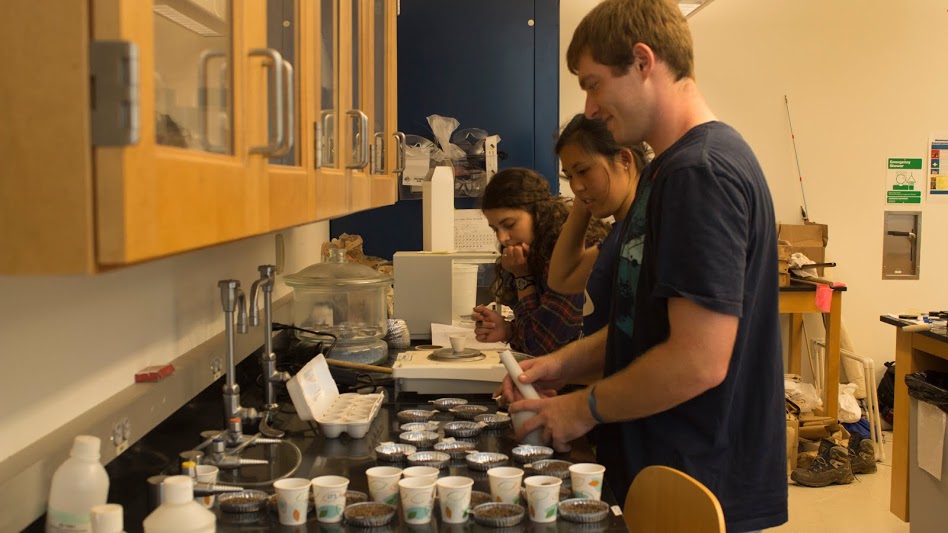
In today’s environmentally conscious academic climate, there has been a significant amount of attention paid to the destruction caused by industry to the planet. However, this summer Hamilton students Samantha Mengual ’16, Zoe Tessler ’16 and Daniel O’Shea ’17 are researching a less frequently considered potential cause of decreasing biodiversity: invasive exotic species. The group’s research is being performed under the advisement of Associate Professor of Biology William Pfitsch, and is focusing on the Alliaria petiolata plant, more commonly known as garlic mustard.
Garlic mustard, while usually only noticed by the casual observer for its distinctive odor, is in fact a highly invasive species introduced by European settlers to North America sometime during the 1860’s, leading to its relatively rapid and persistent spread across the continent. Mengual, Tessler and O’Shea’s research this summer focuses primarily on garlic mustard’s impact upon surrounding ecosystems as the plant breaks down. Within its plant tissues garlic mustard contains glucosinolates, which when broken down convert into cyanide toxins, chemicals which are thought to inhibit the function and growth of other plants within a given ecosystem. However, the plant tissues of garlic mustard also possess other chemicals such as nitrogen, which could be beneficial to the plants surrounding it.
The group’s research hopes to evaluate and weigh these potential positives and negatives of the presence of garlic mustard in North American ecosystems through contained observation of the plants. To achieve these goals, the group has constructed seven individual stands in the Kirkland and Rogers Glens, each with varying degrees of garlic mustard infestation. “(This research) is important,” said Mengual, “because garlic mustard has spread throughout the nation, and can potentially be limiting the growth of agricultural crops, etc., so it’s important to know how invasive plants affect local ecosystems.” “Research is inconclusive on these plants,” added Tessler, “so we’re just trying to add to that literature.”
This is not the first time this subject has been approached at Hamilton, as Professor Pfitsch has been collecting data on garlic mustard alongside senior thesis students and summer researchers since 2011. All three team members became interested in this course of research through Pfitsch -- Tessler and Mengual’s as senior research advisees, and O’Shea as an academic advisee. In addition to enthusiasm for plant ecology as well as invasive species management, the team cited the hands-on nature of this research as particularly attractive. “That’s what’s so great about ecological research,” said Mengual, “It’s exciting to take your work out into the field, not to just be limited to the lab.”
This research comes at an opportune time for these students. With ecology and environmental awareness in the forefront of the public consciousness, and with non-native and potentially invasive species constituting around 25 percent of the plant population of North America, demand for students literate in these topics will only be on the rise moving forward.
Posted July 20, 2015
 Read more
Read more 